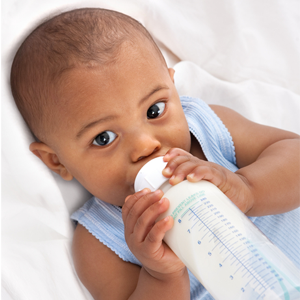Baby Formula
<<<<=====Share on Google+ and Like above
Share on Facebook and RETWEET HERE============>>>>
And Comment Below!
Baby Formula
By: Jean Burns
If you’re a new mother, you already know that breastfeeding is best for your baby. But not everyone can successfully breastfeed. What’s important is that your baby gets the nourishment he needs to develop and thrive. If your baby isn’t thriving on breast milk, then you need to switch to formula. There are many different options to choose from if you do decide to switch from breast milk to formula.
The brand you choose isn’t important. All formulas are prepared according to FDA regulations which specify minimum and, in some cases, maximum nutrient level requirements for infant formulas, based on recommendations by the American Academy of Pediatrics Committee on Nutrition. When it comes to what to feed babies, these regulations and the Infant Formula Act help to make sure that all infant formulas are nutritionally complete and safe for feeding a baby.
The American Academy of Pediatrics does not endorse or recommend that your infant drink any specific brand of formula if you choose not to breastfeed, except they do say that low iron formula should not be used.
Baby milk formulas mostly differ in the type of sugar and protein that they have. Regular iron fortified infant formulas, such as Similac Advance, Enfamil Lipil, and Nestle Good Start Supreme are made with lactose and cow’s milk based proteins. Most infants who are not breastfeeding exclusively should be given a cow’s milk based iron fortified baby milk formula.
Soy formulas are made with soy protein and are lactose free. They are good for children who don’t tolerate lactose or milk proteins.
Elemental formulas are also lactose free and are made with hydrolysate proteins, which are easy to digest for infants with protein allergies. If you have a family history of food allergies or formula intolerances, you might choose to start your baby off with a soy or elemental formula if you do not want to breastfeed.
There are three types of baby bottles are available: glass, plastic and plastic with disposable plastic liners. Glass bottles are very durable but they are a little heavier to use and they are breakable. Plastic bottles are also very sturdy and are more lightweight. Bottles with liners are convenient since the liners don’t need to be sterilized but they can also be expensive to use. Some plastic bottles are shaped at an angle to minimize the amount of air the baby takes in her stomach when feeding.
You can choose several styles of nipples in either rubber or silicone. You should buy new nipples every three months. As your baby gets older, buy nipples with larger holes.
Most babies are content with formula that is at room temperature. If your baby prefers warmed-up formula, heat the bottle (with the formula already in it) by running it under hot water from the faucet. This way you can ensure the liquid is not too hot and you can frequently check the temperature by shaking some formula on your wrist. Don’t microwave formula because the liquid heats unevenly. Even though the bottle may be cool to your touch, the liquid inside could be burning hot and scald your baby’s throat.
Feeding time is usually an enjoyable experience for the person feeding the baby and the baby. Cuddling with your baby is important and feeding time is the perfect opportunity to get in some skin-to-skin contact. When your baby is about halfway finished drinking the formula in the bottle, take a break and burp her to release any gas that may be accumulating in her tummy.
A general rule of thumb is to burp your baby after every 2 ounces eaten. If you forget to do this, your baby will wake up from her restful sleep crying due to the need to burp.
Tags:
breast milk to formula
what to feed babies
baby milk
feeding a baby

